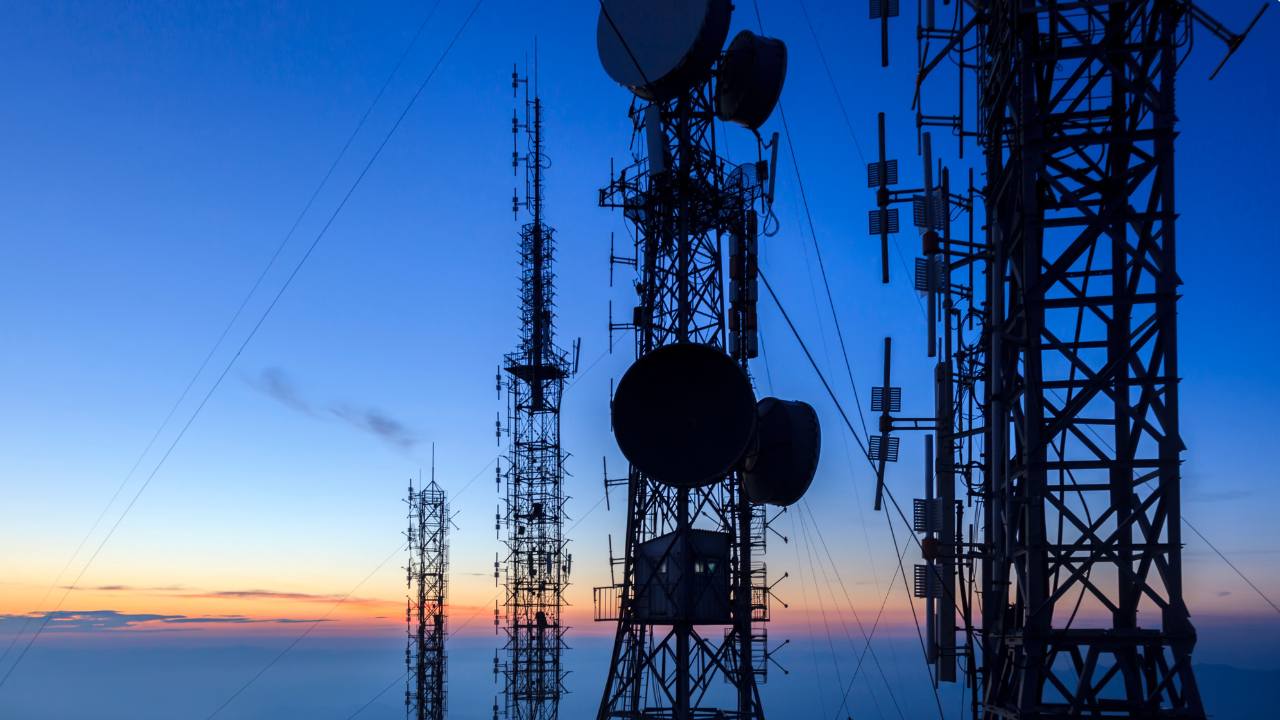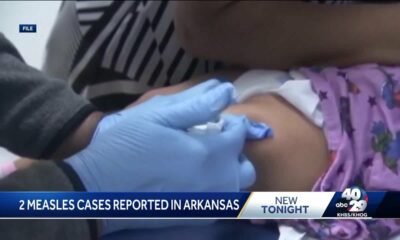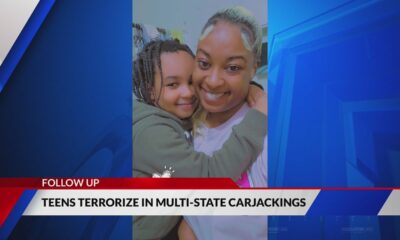Kaiser Health News
The Hospital Bills Didn’t Find Her, but a Lawsuit Did — Plus Interest

by Bram Sable-Smith
Tue, 27 Jun 2023 09:00:00 +0000
Bethany Birch had pain in her diaphragm on and off for eight months in 2016.
She knew it was triggered by food, so she said she tried taking an antacid. That helped a little, but, eventually, she avoided eating altogether. She estimated she lost 25 pounds in that time.
One night that September, the pain would not go away for hours. It was so severe she went to the emergency room at Indian Path Community Hospital in Kingsport, Tennessee, where she lives. An ultrasound revealed she needed her gallbladder removed right away. She was able to get into surgery quickly because she hadn’t eaten in over 12 hours due to her food avoidance.
At the time, Birch was 23 and uninsured. Once she was released from the hospital, however, she lost her housing and spent months without a permanent mailing address while crashing with family.
“It was a pretty rough situation because, at the time, I didn’t have a job, I didn’t have a driver’s license or anything,” Birch said.
For fear of bills she couldn’t afford, she said, she had often avoided seeking care for emergencies, including a broken finger, asthma attacks, and a sprained ankle. She didn’t expect her gallbladder surgery — which cured her pain — to be free.
But she said she never received a bill. She got engaged and moved in with her husband after they married at the end of 2017. Then, in 2018, there was a knock on her door, and she was served a lawsuit.
The Patient: Bethany Birch — née Bethany Allison — now 30, a stay-at-home mom. She lacked health coverage at the time of her surgery.
Medical Services: Emergency gallbladder removal in 2016, plus a previous visit to the emergency room at the same hospital the same year. A bill later obtained for that visit showed she received treatments consistent with an asthma attack, and while Birch said she could not recall that specific visit, she added that she has gone to the ER so many times for asthma attacks she finds it hard to keep track.
Service Provider: Indian Path Community Hospital, which in 2018 became part of Ballad Health, a health system in Tennessee and Virginia.
Total Bill: $11,749.60 plus interest, for two hospital visits and additional court costs associated with the lawsuit Ballad Health pursued against Birch. According to an affidavit of debt, she owed the hospital $9,986.40 for gallbladder removal surgery and $1,603.70 for the previous visit. The court judgment ultimately tacked on $159.50 in court costs and an interest rate of 7%. As of May 2023, she had accumulated $2,715.97 in interest.
What Gives: In October 2018, Birch was served papers at her home in Kingsport informing her that Ballad Health was suing her for $11,590.10 for two unpaid hospital bills from 2016 — including $9,986.40 for her gallbladder removal.
An executive with the health system later said the hospital attempted to contact her for payment and to discuss charity care. But Birch — who had neither a permanent mailing address nor reliable phone service at the time and could not recall whether she provided the hospital with her email address — said she never received their communications.
Under the Affordable Care Act, hospitals must take certain measures to notify patients of an outstanding bill before pursuing “extraordinary collection actions,” like filing a lawsuit. But experts said the law does not account for individual circumstances that can complicate a patient’s receipt of a bill.
And when interest is added to a repayment plan, medical debt can balloon even more. Ballad Health sued more than 6,700 patients over medical debt in 2018, according to an analysis by The New York Times.
Birch brought her father along for support when she showed up to her court date that November, but she did not have an attorney representing her.
“I would never be able to afford one,” Birch said.
At the courthouse, she said, she met with a representative from Wakefield & Associates — now known simply as Wakefield — the debt collection and revenue firm representing the health system. Birch signed an agreement to pay the full $11,590.10, plus $159.50 in court costs, in monthly installments of $100 beginning in January 2019.
The court tacked on a 7% interest rate, the default interest rate under Tennessee law at the time of the judgment.
Karen Scheibe Eliason, general counsel at Wakefield, declined interview requests despite Birch’s offer to give permission for a representative of the company to speak with KFF Health News about her case.
Anthony Keck, an executive vice president at Ballad Health, reviewed Birch’s case with KFF Health News after Birch signed a release waiving federal privacy protections. The health system’s timeline indicates a screening of Birch found she was single, uninsured, and unemployed at the time of the visit.
Given those circumstances, Birch might have qualified for free or reduced-cost care under the hospital’s financial assistance policy for low-income patients if she had applied.
Information about the financial assistance option was included in the bills the hospital mailed in September, October, and December 2016, Keck said.
But Birch said she never received the bills, likely because they were sent to an address where she no longer lived. She said she filed a change of address form with the post office in 2017 listing her grandmother’s house, where she was staying, but that change would have occurred after the hospital said it sent her bills. She didn’t initially update her address, she said, because she didn’t have a permanent place to live.
Ballad Health’s timeline also indicates a financial counselor left a voicemail for Birch soon after she left the hospital, which Birch said she also did not receive, likely because her pay-as-you-go phone plan was not paid at the time.
Keck said Ballad Health has since changed its financial assistance program to screen and help people like Birch who have barriers in life that could prevent them from applying for financial assistance, such as financial, housing, and food insecurity.
“If we had had that system in place” when Birch was being treated, Keck said, “this wouldn’t have happened.”
The hospital where Birch was treated became part of Ballad Health in 2018, when two competing hospital systems in eastern Tennessee merged, creating one of the largest health systems in the country. According to recent public filings, Ballad Health had an operating revenue of $2.3 billion in 2022 and paid its CEO $2.8 million in 2021.
The Resolution: Birch was originally sued for $11,590.10. Since her court-ordered payment plan began, Birch had paid $5,270.20 as of May.
But her balance was still $9,299.82 — $6,583.85 on the principal amount, for her hospital debt and court costs, plus $2,715.97 of accrued interest. After more than four years of payments, she had barely made a dent in her debt.
A KFF Health News-NPR investigation showed many hospitals now commonly use aggressive collection tactics, including selling unpaid medical debt to third-party companies that handle collections, like Wakefield, and pursuing lawsuits against patients.
Keck said Ballad Health does not receive the interest payments. “Interest is mandated by the courts and is directed towards legal fees incurred by the agency collecting on the unpaid patient debt,” he said.
In February, Birch started receiving assistance from Ashley Beasley, a patient advocate her grandmother knew from church. Beasley agreed to help Birch as a favor and suggested she reach out to NPR and KFF Health News.
Birch and Beasley said they asked Ballad Health twice that month to settle her debt, but representatives told them Birch needed to work with Wakefield, the debt collector. When they called Wakefield, they said they were told Birch had to work with Ballad Health.
In May, on a phone call with Wakefield representative Anna Elrick, Birch and Beasley again asked to settle the debt, offering to pay an additional $500 on top of what Birch had already paid. Elrick said she would take the offer to Ballad Health. Three days later, Elrick called Beasley to say their offer had been accepted, Beasley said. Birch has since paid the $500 and received a letter from Wakefield acknowledging her account has been paid in full.
Birch called her settlement “bittersweet.” On one hand, she said, she feels relief.
“But it’s bitter because I know I’m not the only person who’s fallen prey to this,” she said. “I’m not going to forget that there are other people in my situation, too.”
The Takeaway: The ACA requires hospitals to make “reasonable efforts” to determine if a patient qualifies for financial assistance before taking them to court. Those efforts specifically include notifying a patient about a financial assistance policy and waiting at least 120 days after providing the first billing statement before initiating a legal process, for instance. Ballad Health’s timeline of Birch’s case indicates the health system followed those steps.
Zack Buck, a University of Tennessee associate professor who specializes in health law, said the ACA standards leave gaps that patients living in unstable circumstances can fall through.
“What does it mean to provide someone with a bill if it’s someone who is not easily reachable and does not have a home?” he said. “It’s almost as if the regulations don’t even ponder that possibility.”
Berneta Haynes, a senior attorney with the National Consumer Law Center, said some states have moved to cap or even ban certain interest charges on medical debt. In Arizona, for example, voters approved a 3% cap on medical debt last year. A Maryland law passed in 2021 prohibits hospitals from charging interest payments for patients who qualify for free or discounted care.
But Haynes said policy initiatives should also focus on how to prevent medical debt in the first place.
“Because once it happens, it seems like the situations get more and more complicated and people get left in these gaps,” Haynes said.
Bill of the Month is a crowdsourced investigation by KFF Health News and NPR that dissects and explains medical bills. Do you have an interesting medical bill you want to share with us? Tell us about it!
By: Bram Sable-Smith
Title: The Hospital Bills Didn’t Find Her, but a Lawsuit Did — Plus Interest
Sourced From: kffhealthnews.org/news/article/bill-of-the-month-june-2023-undeliverable-unreceived-hospital-bills-medical-debt/
Published Date: Tue, 27 Jun 2023 09:00:00 +0000
Kaiser Health News
US Judge Names Receiver To Take Over California Prisons’ Mental Health Program

SACRAMENTO, Calif. — A judge has initiated a federal court takeover of California’s troubled prison mental health system by naming the former head of the Federal Bureau of Prisons to serve as receiver, giving her four months to craft a plan to provide adequate care for tens of thousands of prisoners with serious mental illness.
Senior U.S. District Judge Kimberly Mueller issued her order March 19, identifying Colette Peters as the nominated receiver. Peters, who was Oregon’s first female corrections director and known as a reformer, ran the scandal-plagued federal prison system for 30 months until President Donald Trump took office in January. During her tenure, she closed a women’s prison in Dublin, east of Oakland, that had become known as the “rape club.”
Michael Bien, who represents prisoners with mental illness in the long-running prison lawsuit, said Peters is a good choice. Bien said Peters’ time in Oregon and Washington, D.C., showed that she “kind of buys into the fact that there are things we can do better in the American system.”
“We took strong objection to many things that happened under her tenure at the BOP, but I do think that this is a different job and she’s capable of doing it,” said Bien, whose firm also represents women who were housed at the shuttered federal women’s prison.
California corrections officials called Peters “highly qualified” in a statement, while Gov. Gavin Newsom’s office did not immediately comment. Mueller gave the parties until March 28 to show cause why Peters should not be appointed.
Peters is not talking to the media at this time, Bien said. The judge said Peters is to be paid $400,000 a year, prorated for the four-month period.
About 34,000 people incarcerated in California prisons have been diagnosed with serious mental illnesses, representing more than a third of California’s prison population, who face harm because of the state’s noncompliance, Mueller said.
Appointing a receiver is a rare step taken when federal judges feel they have exhausted other options. A receiver took control of Alabama’s correctional system in 1976, and they have otherwise been used to govern prisons and jails only about a dozen times, mostly to combat poor conditions caused by overcrowding. Attorneys representing inmates in Arizona have asked a judge to take over prison health care there.
Mueller’s appointment of a receiver comes nearly 20 years after a different federal judge seized control of California’s prison medical system and installed a receiver, currently J. Clark Kelso, with broad powers to hire, fire, and spend the state’s money.
California officials initially said in August that they would not oppose a receivership for the mental health program provided that the receiver was also Kelso, saying then that federal control “has successfully transformed medical care” in California prisons. But Kelso withdrew from consideration in September, as did two subsequent candidates. Kelso said he could not act “zealously and with fidelity as receiver in both cases.”
Both cases have been running for so long that they are now overseen by a second generation of judges. The original federal judges, in a legal battle that reached the U.S. Supreme Court, more than a decade ago forced California to significantly reduce prison crowding in a bid to improve medical and mental health care for incarcerated people.
State officials in court filings defended their improvements over the decades. Prisoners’ attorneys countered that treatment remains poor, as evidenced in part by the system’s record-high suicide rate, topping 31 suicides per 100,000 prisoners, nearly double that in federal prisons.
“More than a quarter of the 30 class-members who died by suicide in 2023 received inadequate care because of understaffing,” prisoners’ attorneys wrote in January, citing the prison system’s own analysis. One prisoner did not receive mental health appointments for seven months “before he hanged himself with a bedsheet.”
They argued that the November passage of a ballot measure increasing criminal penalties for some drug and theft crimes is likely to increase the prison population and worsen staffing shortages.
California officials argued in January that Mueller isn’t legally justified in appointing a receiver because “progress has been slow at times but it has not stalled.”
Mueller has countered that she had no choice but to appoint an outside professional to run the prisons’ mental health program, given officials’ intransigence even after she held top officials in contempt of court and levied fines topping $110 million in June. Those extreme actions, she said, only triggered more delays.
The 9th U.S. Circuit Court of Appeals on March 19 upheld Mueller’s contempt ruling but said she didn’t sufficiently justify calculating the fines by doubling the state’s monthly salary savings from understaffing prisons. It upheld the fines to the extent that they reflect the state’s actual salary savings but sent the case back to Mueller to justify any higher penalty.
Mueller had been set to begin additional civil contempt proceedings against state officials for their failure to meet two other court requirements: adequately staffing the prison system’s psychiatric inpatient program and improving suicide prevention measures. Those could bring additional fines topping tens of millions of dollars.
But she said her initial contempt order has not had the intended effect of compelling compliance. Mueller wrote as far back as July that additional contempt rulings would also be likely to be ineffective as state officials continued to appeal and seek delays, leading “to even more unending litigation, litigation, litigation.”
She went on to foreshadow her latest order naming a receiver in a preliminary order: “There is one step the court has taken great pains to avoid. But at this point,” Mueller wrote, “the court concludes the only way to achieve full compliance in this action is for the court to appoint its own receiver.”
This article was produced by KFF Health News, which publishes California Healthline, an editorially independent service of the California Health Care Foundation.
If you or someone you know may be experiencing a mental health crisis, contact the 988 Suicide & Crisis Lifeline by dialing or texting “988.”
The post US Judge Names Receiver To Take Over California Prisons’ Mental Health Program appeared first on kffhealthnews.org
Kaiser Health News
Amid Plummeting Diversity at Medical Schools, a Warning of DEI Crackdown’s ‘Chilling Effect’

The Trump administration’s crackdown on DEI programs could exacerbate an unexpectedly steep drop in diversity among medical school students, even in states like California, where public universities have been navigating bans on affirmative action for decades. Education and health experts warn that, ultimately, this could harm patient care.
Since taking office, President Donald Trump has issued a handful of executive orders aimed at terminating all diversity, equity, and inclusion, or DEI, initiatives in federally funded programs. And in his March 4 address to Congress, he described the Supreme Court’s 2023 decision banning the consideration of race in college and university admissions as “brave and very powerful.”
Last month, the Education Department’s Office for Civil Rights — which lost about 50% of its staff in mid-March — directed schools, including postsecondary institutions, to end race-based programs or risk losing federal funding. The “Dear Colleague” letter cited the Supreme Court’s decision.
Paulette Granberry Russell, president and CEO of the National Association of Diversity Officers in Higher Education, said that “every utterance of ‘diversity’ is now being viewed as a violation or considered unlawful or illegal.” Her organization filed a lawsuit challenging Trump’s anti-DEI executive orders.
While California and eight other states — Arizona, Florida, Idaho, Michigan, Nebraska, New Hampshire, Oklahoma, and Washington — had already implemented bans of varying degrees on race-based admissions policies well before the Supreme Court decision, schools bolstered diversity in their ranks with equity initiatives such as targeted scholarships, trainings, and recruitment programs.
But the court’s decision and the subsequent state-level backlash — 29 states have since introduced bills to curb diversity initiatives, according to data published by the Chronicle of Higher Education — have tamped down these efforts and led to the recent declines in diversity numbers, education experts said.
After the Supreme Court’s ruling, the numbers of Black and Hispanic medical school enrollees fell by double-digit percentages in the 2024-25 school year compared with the previous year, according to the Association of American Medical Colleges. Black enrollees declined 11.6%, while the number of new students of Hispanic origin fell 10.8%. The decline in enrollment of American Indian or Alaska Native students was even more dramatic, at 22.1%. New Native Hawaiian or other Pacific Islander enrollment declined 4.3%.
“We knew this would happen,” said Norma Poll-Hunter, AAMC’s senior director of workforce diversity. “But it was double digits — much larger than what we anticipated.”
The fear among educators is the numbers will decline even more under the new administration.
At the end of February, the Education Department launched an online portal encouraging people to “report illegal discriminatory practices at institutions of learning,” stating that students should have “learning free of divisive ideologies and indoctrination.” The agency later issued a “Frequently Asked Questions” document about its new policies, clarifying that it was acceptable to observe events like Black History Month but warning schools that they “must consider whether any school programming discourages members of all races from attending.”
“It definitely has a chilling effect,” Poll-Hunter said. “There is a lot of fear that could cause institutions to limit their efforts.”
Numerous requests for comment from medical schools about the impact of the anti-DEI actions went unreturned. University presidents are staying mum on the issue to protect their institutions, according to reporting from The New York Times.
Utibe Essien, a physician and UCLA assistant professor, said he has heard from some students who fear they won’t be considered for admission under the new policies. Essien, who co-authored a study on the effect of affirmative action bans on medical schools, also said students are worried medical schools will not be as supportive toward students of color as in the past.
“Both of these fears have the risk of limiting the options of schools folks apply to and potentially those who consider medicine as an option at all,” Essien said, adding that the “lawsuits around equity policies and just the climate of anti-diversity have brought institutions to this place where they feel uncomfortable.”
In early February, the Pacific Legal Foundation filed a lawsuit against the University of California-San Francisco’s Benioff Children’s Hospital Oakland over an internship program designed to introduce “underrepresented minority high school students to health professions.”
Attorney Andrew Quinio filed the suit, which argues that its plaintiff, a white teenager, was not accepted to the program after disclosing in an interview that she identified as white.
“From a legal standpoint, the issue that comes about from all this is: How do you choose diversity without running afoul of the Constitution?” Quinio said. “For those who want diversity as a goal, it cannot be a goal that is achieved with discrimination.”
UC Health spokesperson Heather Harper declined to comment on the suit on behalf of the hospital system.
Another lawsuit filed in February accuses the University of California of favoring Black and Latino students over Asian American and white applicants in its undergraduate admissions. Specifically, the complaint states that UC officials pushed campuses to use a “holistic” approach to admissions and “move away from objective criteria towards more subjective assessments of the overall appeal of individual candidates.”
The scrutiny of that approach to admissions could threaten diversity at the UC-Davis School of Medicine, which for years has employed a “race-neutral, holistic admissions model” that reportedly tripled enrollment of Black, Latino, and Native American students.
“How do you define diversity? Does it now include the way we consider how someone’s lived experience may be influenced by how they grew up? The type of school, the income of their family? All of those are diversity,” said Granberry Russell, of the National Association of Diversity Officers in Higher Education. “What might they view as an unlawful proxy for diversity equity and inclusion? That’s what we’re confronted with.”
California Attorney General Rob Bonta, a Democrat, recently joined other state attorneys general to issue guidance urging that schools continue their DEI programs despite the federal messaging, saying that legal precedent allows for the activities. California is also among several states suing the administration over its deep cuts to the Education Department.
If the recent decline in diversity among newly enrolled students holds or gets worse, it could have long-term consequences for patient care, academic experts said, pointing toward the vast racial disparities in health outcomes in the U.S., particularly for Black people.
A higher proportion of Black primary care doctors is associated with longer life expectancy and lower mortality rates among Black people, according to a 2023 study published by the JAMA Network.
Physicians of color are also more likely to build their careers in medically underserved communities, studies have shown, which is increasingly important as the AAMC projects a shortage of up to 40,400 primary care doctors by 2036.
“The physician shortage persists, and it’s dire in rural communities,” Poll-Hunter said. “We know that diversity efforts are really about improving access for everyone. More diversity leads to greater access to care — everyone is benefiting from it.”
This article was produced by KFF Health News, which publishes California Healthline, an editorially independent service of the California Health Care Foundation.
The post Amid Plummeting Diversity at Medical Schools, a Warning of DEI Crackdown’s ‘Chilling Effect’ appeared first on kffhealthnews.org
Kaiser Health News
Tribal Health Leaders Say Medicaid Cuts Would Decimate Health Programs

As Congress mulls potentially massive cuts to federal Medicaid funding, health centers that serve Native American communities, such as the Oneida Community Health Center near Green Bay, Wisconsin, are bracing for catastrophe.
That’s because more than 40% of the about 15,000 patients the center serves are enrolled in Medicaid. Cuts to the program would be detrimental to those patients and the facility, said Debra Danforth, the director of the Oneida Comprehensive Health Division and a citizen of the Oneida Nation.
“It would be a tremendous hit,” she said.
The facility provides a range of services to most of the Oneida Nation’s 17,000 people, including ambulatory care, internal medicine, family practice, and obstetrics. The tribe is one of two in Wisconsin that have an “open-door policy,” Danforth said, which means that the facility is open to members of any federally recognized tribe.
But Danforth and many other tribal health officials say Medicaid cuts would cause service reductions at health facilities that serve Native Americans.
Indian Country has a unique relationship to Medicaid, because the program helps tribes cover chronic funding shortfalls from the Indian Health Service, the federal agency responsible for providing health care to Native Americans.
Medicaid has accounted for about two-thirds of third-party revenue for tribal health providers, creating financial stability and helping facilities pay operational costs. More than a million Native Americans enrolled in Medicaid or the closely related Children’s Health Insurance Program also rely on the insurance to pay for care outside of tribal health facilities without going into significant medical debt. Tribal leaders are calling on Congress to exempt tribes from cuts and are preparing to fight to preserve their access.
“Medicaid is one of the ways in which the federal government meets its trust and treaty obligations to provide health care to us,” said Liz Malerba, director of policy and legislative affairs for the United South and Eastern Tribes Sovereignty Protection Fund, a nonprofit policy advocacy organization for 33 tribes spanning from Texas to Maine. Malerba is a citizen of the Mohegan Tribe.
“So we view any disruption or cut to Medicaid as an abrogation of that responsibility,” she said.
Tribes face an arduous task in providing care to a population that experiences severe health disparities, a high incidence of chronic illness, and, at least in western states, a life expectancy of 64 years — the lowest of any demographic group in the U.S. Yet, in recent years, some tribes have expanded access to care for their communities by adding health services and providers, enabled in part by Medicaid reimbursements.
During the last two fiscal years, five urban Indian organizations in Montana saw funding growth of nearly $3 million, said Lisa James, director of development for the Montana Consortium for Urban Indian Health, during a webinar in February organized by the Georgetown University Center for Children and Families and the National Council of Urban Indian Health.
The increased revenue was “instrumental,” James said, allowing clinics in the state to add services that previously had not been available unless referred out for, including behavioral health services. Clinics were also able to expand operating hours and staffing.
Montana’s five urban Indian clinics, in Missoula, Helena, Butte, Great Falls, and Billings, serve 30,000 people, including some who are not Native American or enrolled in a tribe. The clinics provide a wide range of services, including primary care, dental care, disease prevention, health education, and substance use prevention.
James said Medicaid cuts would require Montana’s urban Indian health organizations to cut services and limit their ability to address health disparities.
American Indian and Alaska Native people under age 65 are more likely to be uninsured than white people under 65, but 30% rely on Medicaid compared with 15% of their white counterparts, according to KFF data for 2017 to 2021. More than 40% of American Indian and Alaska Native children are enrolled in Medicaid or CHIP, which provides health insurance to kids whose families are not eligible for Medicaid. KFF is a health information nonprofit that includes KFF Health News.
A Georgetown Center for Children and Families report from January found the share of residents enrolled in Medicaid was higher in counties with a significant Native American presence. The proportion on Medicaid in small-town or rural counties that are mostly within tribal statistical areas, tribal subdivisions, reservations, and other Native-designated lands was 28.7%, compared with 22.7% in other small-town or rural counties. About 50% of children in those Native areas were enrolled in Medicaid.
The federal government has already exempted tribes from some of Trump’s executive orders. In late February, Department of Health and Human Services acting general counsel Sean Keveney clarified that tribal health programs would not be affected by an executive order that diversity, equity, and inclusion government programs be terminated, but that the Indian Health Service is expected to discontinue diversity and inclusion hiring efforts established under an Obama-era rule.
HHS Secretary Robert F. Kennedy Jr. also rescinded the layoffs of more than 900 IHS employees in February just hours after they’d received termination notices. During Kennedy’s Senate confirmation hearings, he said he would appoint a Native American as an assistant HHS secretary. The National Indian Health Board, a Washington, D.C.-based nonprofit that advocates for tribes, in December endorsed elevating the director of the Indian Health Service to assistant secretary of HHS.
Jessica Schubel, a senior health care official in Joe Biden’s White House, said exemptions won’t be enough.
“Just because Native Americans are exempt doesn’t mean that they won’t feel the impact of cuts that are made throughout the rest of the program,” she said.
State leaders are also calling for federal Medicaid spending to be spared because cuts to the program would shift costs onto their budgets. Without sustained federal funding, which can cover more than 70% of costs, state lawmakers face decisions such as whether to change eligibility requirements to slim Medicaid rolls, which could cause some Native Americans to lose their health coverage.
Tribal leaders noted that state governments do not have the same responsibility to them as the federal government, yet they face large variations in how they interact with Medicaid depending on their state programs.
President Donald Trump has made seemingly conflicting statements about Medicaid cuts, saying in an interview on Fox News in February that Medicaid and Medicare wouldn’t be touched. In a social media post the same week, Trump expressed strong support for a House budget resolution that would likely require Medicaid cuts.
The budget proposal, which the House approved in late February, requires lawmakers to cut spending to offset tax breaks. The House Committee on Energy and Commerce, which oversees spending on Medicaid and Medicare, is instructed to slash $880 billion over the next decade. The possibility of cuts to the program that, together with CHIP, provides insurance to 79 million people has drawn opposition from national and state organizations.
The federal government reimburses IHS and tribal health facilities 100% of billed costs for American Indian and Alaska Native patients, shielding state budgets from the costs.
Because Medicaid is already a stopgap fix for Native American health programs, tribal leaders said it won’t be a matter of replacing the money but operating with less.
“When you’re talking about somewhere between 30% to 60% of a facility’s budget is made up by Medicaid dollars, that’s a very difficult hole to try and backfill,” said Winn Davis, congressional relations director for the National Indian Health Board.
Congress isn’t required to consult tribes during the budget process, Davis added. Only after changes are made by the Centers for Medicare & Medicaid Services and state agencies are tribes able to engage with them on implementation.
The amount the federal government spends funding the Native American health system is a much smaller portion of its budget than Medicaid. The IHS projected billing Medicaid about $1.3 billion this fiscal year, which represents less than half of 1% of overall federal spending on Medicaid.
“We are saving more lives,” Malerba said of the additional services Medicaid covers in tribal health care. “It brings us closer to a level of 21st century care that we should all have access to but don’t always.”
This article was published with the support of the Journalism & Women Symposium (JAWS) Health Journalism Fellowship, assisted by grants from The Commonwealth Fund.
KFF Health News is a national newsroom that produces in-depth journalism about health issues and is one of the core operating programs at KFF—an independent source of health policy research, polling, and journalism. Learn more about KFF.
USE OUR CONTENT
This story can be republished for free (details).
The post Tribal Health Leaders Say Medicaid Cuts Would Decimate Health Programs appeared first on kffhealthnews.org
-

 News from the South - Arkansas News Feed6 days ago
News from the South - Arkansas News Feed6 days agoMeasles cases confirmed in Arkansas children after travel exposure
-

 Mississippi Today6 days ago
Mississippi Today6 days agoA self-proclaimed ‘loose electron’ journeys through Jackson’s political class
-

 News from the South - Alabama News Feed6 days ago
News from the South - Alabama News Feed6 days agoImpacts of Overdraft Fees | April 11, 2025 | News 19 at 10 p.m.
-

 News from the South - Missouri News Feed7 days ago
News from the South - Missouri News Feed7 days agoSleeping 14-year-old critically injured by bullet in Ferguson home; father flees scene
-

 News from the South - Alabama News Feed7 days ago
News from the South - Alabama News Feed7 days agoPilot Speaks on Helicopter Crash | April 10, 2025 | News 19 at 10 p.m.
-

 News from the South - Georgia News Feed6 days ago
News from the South - Georgia News Feed6 days ago1-on-1 with Gov. Kemp’s Senior Advisor | Full interview
-

 News from the South - Kentucky News Feed7 days ago
News from the South - Kentucky News Feed7 days agoWLKY Investigates: Judge calls decision not to renew Baxter 942’s liquor license ‘unreasonable’
-

 News from the South - Missouri News Feed6 days ago
News from the South - Missouri News Feed6 days agoMom and son targeted in carjackings, stolen cars crime spree














































